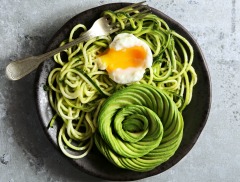Don't just meal plan... meal plan intelligently - with Meal Genius! Sign up for our free newsletter to get delicious recipes, sample meal plans and a whole lot more!
Herbs, Thyme
Thyme is grown in southern Europe and is indiginous to the Mediterranean.
With its subtle, dry aroma and a slightly minty flavor, this herb is central to French cooking and a component of the herb medely "Bouquet garni". There are a number of varieties of this member of the mint-family, each having a distinct flavor.
High in antioxidants, thyme pairs well with vegetables, meat, poultry and fish dishes, soups and cream sauces.
Antioxidant Score (ORAC)=27,426 (fresh)
The Benefits
- Special diets: Autoimmune Paleo Diet, Candida Diet, Diabetic, Elimination Diet, Gluten-Free Diet, Gluten-Free/Dairy-Free Diet, Grain-Free Diet, Low Acid Diet, Low Carb Diet, Low FODMAP Diet, Low Histamine Diet, Low Oxalate Diet, Low Starch Diet, Paleo Diet (Light), Paleo Diet (Strict), PCOS Diet, Pescetarian Diet, Primal Diet, Thyroid Diet, Vegetarian Diet, Whole Food
- Excellent Source of:
- Good Source of:
- Preferences: No Corn, No Yeast, No Peanuts, No Molds, No Coconut, No Pseudograins, No Citrus, No Nightshade, No Fish, No Red Meat, No Pork, No Eggs, No Shellfish, No Gluten, No Nuts, No Seeds, No Soy, No Dairy, No Poultry, No Legumes, No Grains, Low Carbohydrate, Low Cholesterol, Low Fat, Low Sodium, Low Sugars, Low Saturated Fat
Related Foods
Selecting and Storing
Fresh thyme is available primarily during the summer months. Dried thyme — both leaf and powder form — is available year-round. Store thyme in a cool, dark place for no more than 6 months.









